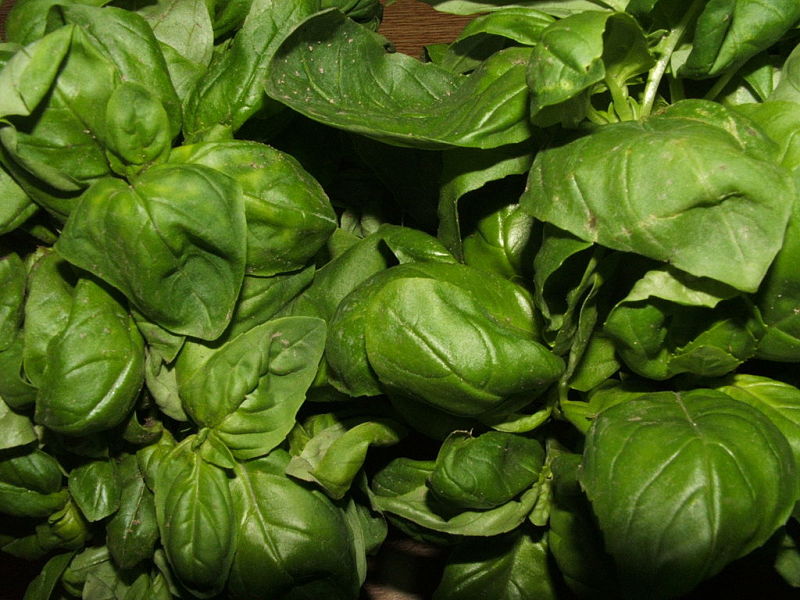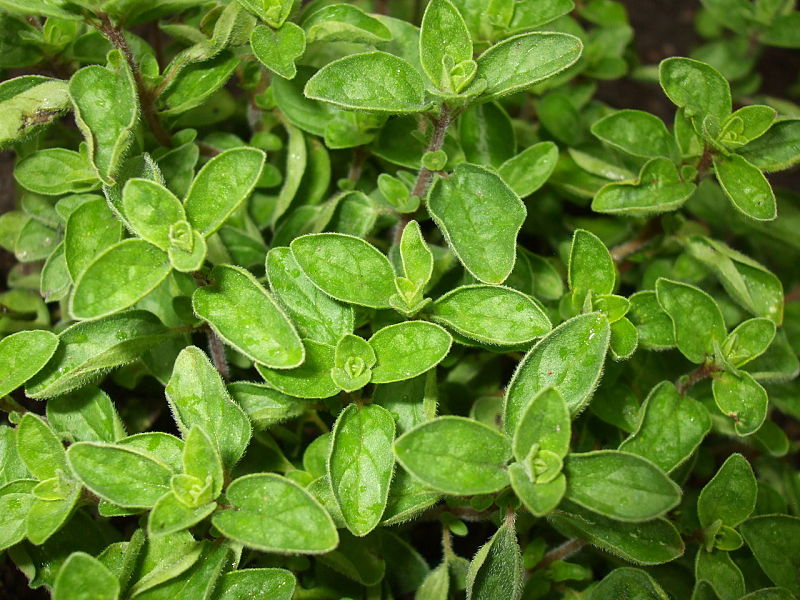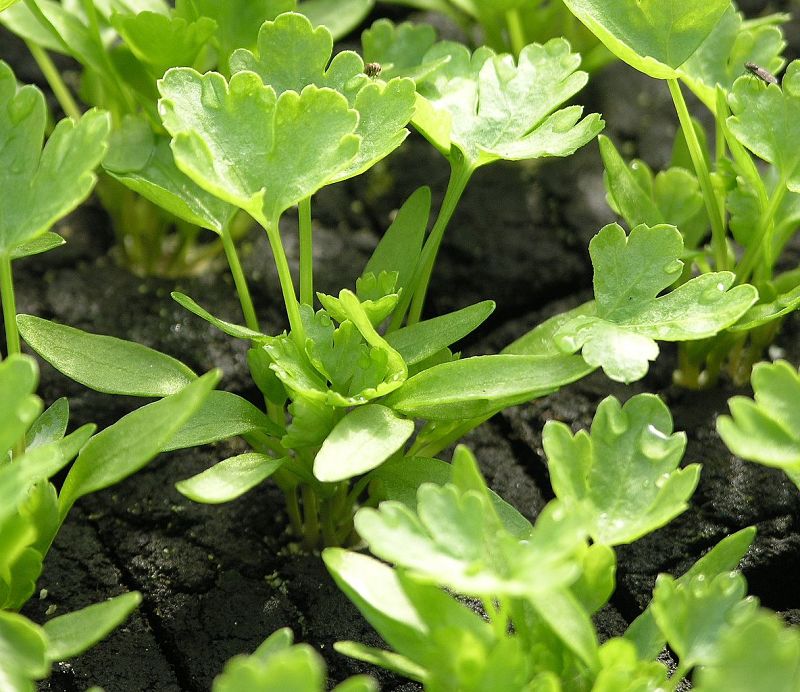Best Herbs to Grow Indoors, Outdoors | Nutritious, Healthy Herbs
Many people grow herbs in their gardens, or in pots around the yard, on balconies or even indoors. When space is limited, pit is good to know which herbs offer the best nutrition.
One consideration is the nutrients in the herbs themselves. While there are many other things to consider such as culinary uses, costs to produce, ease of growth, and taste preference, giving priority to the healthiest herbs makes sense if space is limited.
It is hard to make proper choices because comprehensive nutrient comparisons in the form of charts and summaries are not readily available. This article aims to fill the void. Discover which herbs are the healthiest.
This article includes charts of nutrients in 100g of eight common herbs: rosemary, thyme, peppermint, spearmint, dill, parsley, cilantro (coriander) and basil.
A simple nutrient richness score has been calculated by giving equal weights to fiber, protein and the various vitamins and minerals.
The nutrient scores were added together to produced an overall score for each herb, as a percentage of the herb with the highest level of nutrients.
In addition, the herbs were ranked in term of their relative concentration for each of the key nutrients.
So you can use these summaries to choose which herb to grow to provide the nutrients you want.
The results for the overall winner and the herbs with the highest levels of nutrientswill surprise you.
This article also summarizes the health benefits of the common herbs and provides tips for grow them at home.
Which is the Healthiest Herb, and Why?
The table at the end of the article provides a list of nutrition data for the common herbs.
The weighted nutrient scores for the herbs, presented as a percentage of the healthiest herb overall is shown opposite.
The table at the end of the article provides a list of nutrition data for the common herbs.
The weighted nutrient scores for the herbs, presented as a percentage of the healthiest herb is shown in the table opposite. The major points are:
► The clear winner was thyme(100%), followed by rosemary (70% of that for thyme)
► The clear losers were basil (44%) and cilantro (coriander) (41%)
► Parsley and dill receivedintermediate scores of about 68%
► The two mints, peppermint (64%) and spearmint (56%), had moderately low scores, but ranked higher than basil and cilantro.
| Herb | Overall Nutrient Content Score as a Percentage |
|---|---|
| thyme | 100 |
| rosemary | 71 |
| parsley | 68 |
| dill | 68 |
| peppermint | 64 |
| spearmint | 56 |
| basil | 44 |
| cilantro | 41 |
Which is the Healthiest Herb for Each of the Most Important Nutrients
The table below shows the relative ranks for the key nutrients, from highest to lowest.
The Top Three for Each of the Key Nutrients
Fiber ► rosemary, thyme, spearmint
Protein ► thyme, peppermint, dill
Vitamins
Vitamin C ► thyme, parsley, dill
Riboflavin ► thyme, dill, peppermint
Niacin ► thyme, peppermint, dill
Pantothenic Acid ► rosemary, cilantro, thyme
Folate ► parsley, dill, peppermint
Vitamin A parsley, dill, cilantro
Minerals
Calcium ► thyme, rosemary, peppermint
Iron ► thyme, spearmint, rosemary
Magnesium ► thyme, rosemary, spearmint
Phosphorus ► thyme, dill, peppermint
Zinc ► thyme, peppermint, spearmint
Copper ► thyme, basil, peppermint
Manganese ► thyme, dill, peppermint
Conclusion
Clearly thyme, rosemary and dill were highest for most nutrients, especially for the minerals. Parsley and dill had high concentrations of vitamins. The two mints also featured high up in ranks for minerals
The Bottom Three for Each of the Key Nutrients
fiber ► cilantro, dill , basil
protein ►parsley, basil, cilantro
Vitamins
Vitamin C ► rosemary, basil, spearmint
Riboflavin ► rosemary, parsley, basil
Niacin ► spearmint, rosemary, basil
Pantothenic Acid ► peppermint, spearmint, basil
Folate ► basil, cilantro, thyme
Vitamin A ► peppermint, spearmint, rosemary
Minerals
Calcium ► basil, parsley, cilantro
Iron ► peppermint, basil, cilantro
Magnesium ► parsley, dill , cilantro
Phosphorus ► spearmint, parsley, cilantro
Zinc ► rosemary, basil, cilantro
Copper ► cilantro, parsley, dill
Manganese ► rosemary, cilantro, parsley
Conclusion
Clearly basil and cilantro had low levels of minerals, fiber and protein. Basil had relatively low levels of most of the vitamins.
Summary of the Health Benefits and Home Growing Tips for Herbs
Thyme
Thyme is renowned as an antibiotic and as a herbal remedy for respiratory problems. It has low calories and a wide range of uses thyme.
Growing tip: Thyme is easy to grow and flowers well. It grows best in areas with full sun but can be grown in pots and indoors. It generally stays small in size and does not get out of hand.
Rosemary
Rosemary has many uses as a herbal remedy, antioxidant. There is some evidence that it improves your memory. Its strong aroma means that it can only be used in small quantities.
Growing tip: Rosemary grows easily and like a position in full sun and needs frequent watering. It requires very little maintenance and is an attractive bush.
Basil
Basil is known to calm anxiety symptoms and is a good source of fiber. It has been used for detoxifying treatments. It also has anti-inflammatory properties and is good for digestion. Nutrient levels are low compared with other herbs, but it can be used in much larger quantities.
Growing tip: Basil is easy to grow and is very hardy. It grows easily in pots, indoors and outside in home gardens. It requires regularly watering, but very little else for maintenance. You can easily pick several leaves or stems as you need them.
Parsley
There are several varieties all packed with fiber and nutrients. If space is limited, and you want a versatile herb that yields the best range of nutrients, then choose parsley as first priority. It contains rich amounts of vitamins A, K and C, and many minerals as well.
Growing tip: The various types of parsley are all easy to grow and can be picked as needed. It grows in shaded as well as full sunlight and grows well in pots and indoors. Parsley grows slower than other herbs, so you need to plant several in a clump. It needs to be watered regularly.
Sage
Sage has antibiotic and antioxidant properties and it's good for the skin. It is also renowned as a natural remedy for fatigue and anxiety, and also boosts memory.
Growing tip: Sage is difficult to grow and requires a lot of attention and good soil. It needs plenty of sunshine, but regular watering needs plenty of sunlight and care.
Cilantro (Coriander)
Cilantro is a good source of fiber and iron, but disappoints for the other nutrients. This is offset by the fact that you tend to use large quantities in curries and salads. While the concentration of nutrients is low, adding a large volume means that the total nutrients can be high.
Growing tip: It is generally easy to grow, but requires deep soil to accommodate its long taproot its deep taproot. You need larger pots to grow it indoors. It also tends to go to seed and stop producing foliage, But the seeds are edible!
Dill
Dill is a great source of beta-carotene and other antioxidants. It is relatively rich in a wide range of nutrients.
Growing tip: Dill requires deep, good quality soil and full sunlight. It can be growing in a sunny spot indoors, but needs a relatively large pot and a lot of attention.
Mint
Mint comes in a wide range of varieties. Most mints are good sources of vitamin A and many other vitamins and minerals. Mint is renowned as a home remedy for digestion, respiratory and skin problems. It is also good for the circulation
Growing tip: Mint grows profusely and can easily get out of hand. It needs plenty of space and regular watering. It grows well in pots and indoors.
Ranks for Fresh Herbs for Key Nutrients from Highest to Lowest Level in 100g serving
| Nutrient | Rank 1 | Rank 2 | Rank 3 | Rank 4 | Rank 5 | Rank 6 | Rank 7 | Rank 8 |
|---|---|---|---|---|---|---|---|---|
| calories | rosemary | thyme | peppermint | spearmint | dill | parsley | cilantro | basil |
| fiber | rosemary | thyme | spearmint | peppermint | parsley | cilantro | dill | basil |
| protein | thyme | peppermint | dill | rosemary | speamint | basil | cilantro | |
| Vitamin C | thyme | parsley | dill | peppermint | cilantro | rosemary | basil | spearmint |
| Riboflavin | thyme | dill | peppermint | spearmint | cilantro | rosemary | parsley | basil |
| Niacin | thyme | peppermint | dill | parsley | cilantro | spearmint | rosemary | basil |
| Pantothenic Acid | rosemary | cilantro | thyme | dill | parsley | peppermint | spearmint | basil |
| Folate | parsley | dill | peppermint | rosemary | spearmint | basil | cilantro | thyme |
| Vitamin A | parsley | dill | cilantro | basil | thyme | peppermint | spearmint | rosemary |
| Calcium | thyme | rosemary | peppermint | dill | spearmint | basil | parsley | cilantro |
| Iron | thyme | spearmint | rosemary | dill | parsley | peppermint | basil | cilantro |
| Magnesium | thyme | rosemary | spearmint | peppermint | basil | parsley | dill | cilantro |
| Phosphorus | thyme | dill | peppermint | rosemary | basil | spearmint | parsley | cilantro |
| Zinc | thyme | peppermint | spearmint | parsley | dill | rosemary | basil | cilantro |
| Copper | thyme | basil | peppermint | rosemary | spearmint | cilantro | parsley | dill |
| Manganese | thyme | dill | peppermint | basil | spearmint | rosemary | cilantro | parsley |
Comparison of the Nutrients in Common Fresh Herbs (100g)
| Serving Size (100g) | thyme | rosemary | parsley | dill | peppermint | basil | cilantro |
|---|---|---|---|---|---|---|---|
| Overall Score % | 100 | 71 | 68 | 68 | 64 | 44 | 41 |
| Calories (kcal) | 83 | 118 | 26 | 45 | 63 | 19 | 25 |
| Protein (g) | 5.4 | 3.2 | 2.9 | 3.4 | 3.8 | 3.2 | 2.3 |
| Total Fat (g) | 1.7 | 5.9 | 0.8 | 1.1 | 1.3 | 0.6 | 0.5 |
| Total Carbs (g) | 24.6 | 20.6 | 6.3 | 7.0 | 15.0 | 2.6 | 3.8 |
| Dietary Fiber (g) | 12.5 | 14.7 | 2.6 | 2.3 | 6.3 | 1.9 | 2.5 |
| Vitamins | ****** | ****** | ****** | ****** | ****** | ****** | ****** |
| Vitamin C (mg) | 158.3 | 20.6 | 134.2 | 85.4 | 31.3 | 18.9 | 27.5 |
| Thiamin (mg) | 0.0 | 0.0 | 0.1 | 0.1 | 0.1 | 0.0 | 0.1 |
| Riboflavin (mg) | 0.5 | 0.2 | 0.1 | 0.3 | 0.3 | 0.1 | 0.2 |
| Niacin (mg) | 1.8 | 0.9 | 1.3 | 1.6 | 1.7 | 0.9 | 1.1 |
| Panto. Acid (mg) | 0.4 | 0.8 | 0.4 | 0.4 | 0.3 | 0.2 | 0.6 |
| Vitamin B6 (mg) | 0.3 | 0.3 | 0.1 | 0.2 | 0.1 | 0.2 | 0.2 |
| Folate (mcg) | 41.7 | 117.7 | 157.9 | 157.3 | 125.0 | 75.5 | 50.0 |
| Vitamin A (IU) | 4750 | 2912 | 8421 | 7708 | 4250 | 5283 | 6750 |
| Minerals | ****** | ****** | ****** | ****** | ****** | ****** | ****** |
| Calcium (mg) | 416.7 | 323.5 | 131.6 | 202.3 | 250.0 | 169.8 | 75.0 |
| Iron (mg) | 17.5 | 6.8 | 6.3 | 6.5 | 5.0 | 3.2 | 1.8 |
| Magnesium (mg) | 166.7 | 88.2 | 52.6 | 44.9 | 62.5 | 56.6 | 25.0 |
| Phosphorus (mg) | 125.0 | 58.8 | 52.6 | 67.4 | 62.5 | 56.6 | 50.0 |
| Potassium (mg) | 625.0 | 676.5 | 552.6 | 741.6 | 562.5 | 301.9 | 525.0 |
| Zinc (mg) | 1.7 | 0.9 | 1.1 | 0.9 | 1.3 | 0.8 | 0.5 |
| Copper (mg) | 0.5 | 0.3 | 0.2 | 0.1 | 0.3 | 0.4 | 0.2 |
| Manganese (mg) | 1.7 | 1.0 | 0.2 | 1.3 | 1.2 | 1.2 | 0.4 |


